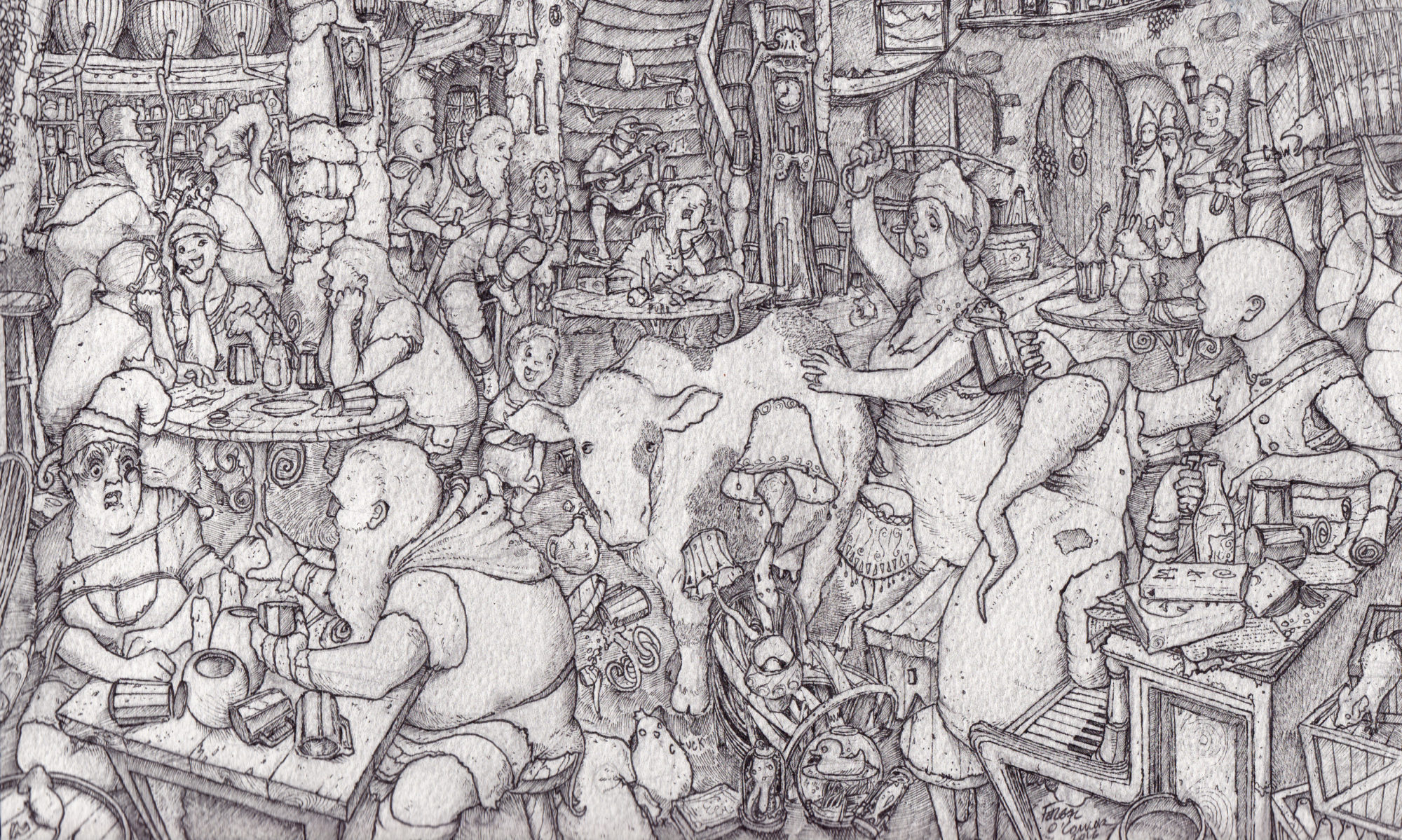The Doonish plateau is a tectonic subcontinent moving south and subducting the great flatland plate that makes up Treveriane. To the north is the endless Fhysay, comprising more than half of the northern hemisphere. The Doonish plate moves at roughly two inches a year and is already piled on top of the Treveriane plate. Given the plateau’s youth and comparatively high-speed, it holds a distinct ecosystem. Life from the lowlands and deserts of the west and east, and south respectively have difficulty moving up, keeping the highlands ecologically separate. Average plateau elevation is between six and fifteen thousand feet above sea level, and the highest peak that has been measured is nearly twenty. The Palm, a midrange peak, has neighbors at least six thousand feet taller, and newcomers report breathing on the Palm is moderately difficult. Altitude sickness is known to be fatal. Generally the Doon’s highest plateaus are to the south of the central area, but the taller peaks are evenly distributed on the interior.
The subcontinent is defined by escarpments to the west, forming the walls separating the highlands from the lowlands. It is in these escarpments the canyon city of Ashirak crouches. Here the Treveriane plate is steadily sinking into the sea. The Bay of Dylath-Leen is a young sea, less than a millenia old, and deepening. Dylath-Leen itself is an old inland city that the sea has come for. Already it has become a port, and built on both plates, part of it sinks while other parts rise. The tallest peak on the escarpment is Rherm, which stands approximately ten thousand feet above the lowlands.
To the east the Doonish plate meets the great depression of the Karas. The center of the Karas depression is far below sea level, and the Doonish plate is climbing on top. It does not extend as far east as the Treveriane, and the rising floor of the Karas meets the eastern sides of the Fhysay in high cliffs. Without carefully examining rock layers and sedimentation, the distinction between Doon and Treveriane is difficult to see. The goblin-filled Typhanf Mountains that make up the barrier between the Karas and the Fhysay are a thin range elongated over thousands of miles. The peaks are far shorter than the mighty Doons but steeper. Made of softer rock, they are eroding faster and the canyons between them are deep, filled with the great trees on the south but bare on the north. The great Jymlin and Ghosthearts do not endure bitter winters well.
Directly south of the highlands are the flatlands of the Horned-Lords. Most terrain here is flat and blasted by heat. The prevailing winds run east to west, and therefore dump most of the moisture on the Arsae. The Arsae crests are famous for scavenging lower rain clouds from the sky. Thus little rain gets to the middle of Treveriane, a broad mix of equatorial grasslands and deserts. Rivers define ecological characteristics, but the rivers of the flatlands are notoriously changeable. Within a decade one can move tens of miles and deserts bloom while grasslands fall to gray dirt. The geographical oddity of the Gunerae hills which manacle the Gunnen River to a course and give it its name rise near the middle. Directly south of the Doon lies Wilno and the equally inexplicable Leng Plateau that rises as high as the Doon, separated from the subcontinent by roughly forty miles and completely distinct geology.
Far to the southeast of Wilno and the Doon plateau lie the elvish cities. Their forests follow the coast as it sweeps south and finally west, crossing the equator and catching the southern equatorial westerlies. The far southern coast is mostly smaller scrub and pine, existing between prevailing winds. The Knifehead deserts meet the Krassich ocean south of the Languid. Farther east lies the Emerald Ocean and Korgan. Meanwhile the Treveriane coast begins to sweep north as it continues west, passed the Spur of Tems and the Spike before cutting due north. There, in the Ungale Ngalnek, is the hottest of the flatlands. Tropical storms in the Korgan tend to move east to west, but upon passing the Spur and Spike, sometimes shank hard right, hooking around to smash the Ungale coast. This land is thus desert known to receive torrential downpours and unimaginable flooding. Rainstorms dropping more than three feet of rain within a few days are not uncommon.
